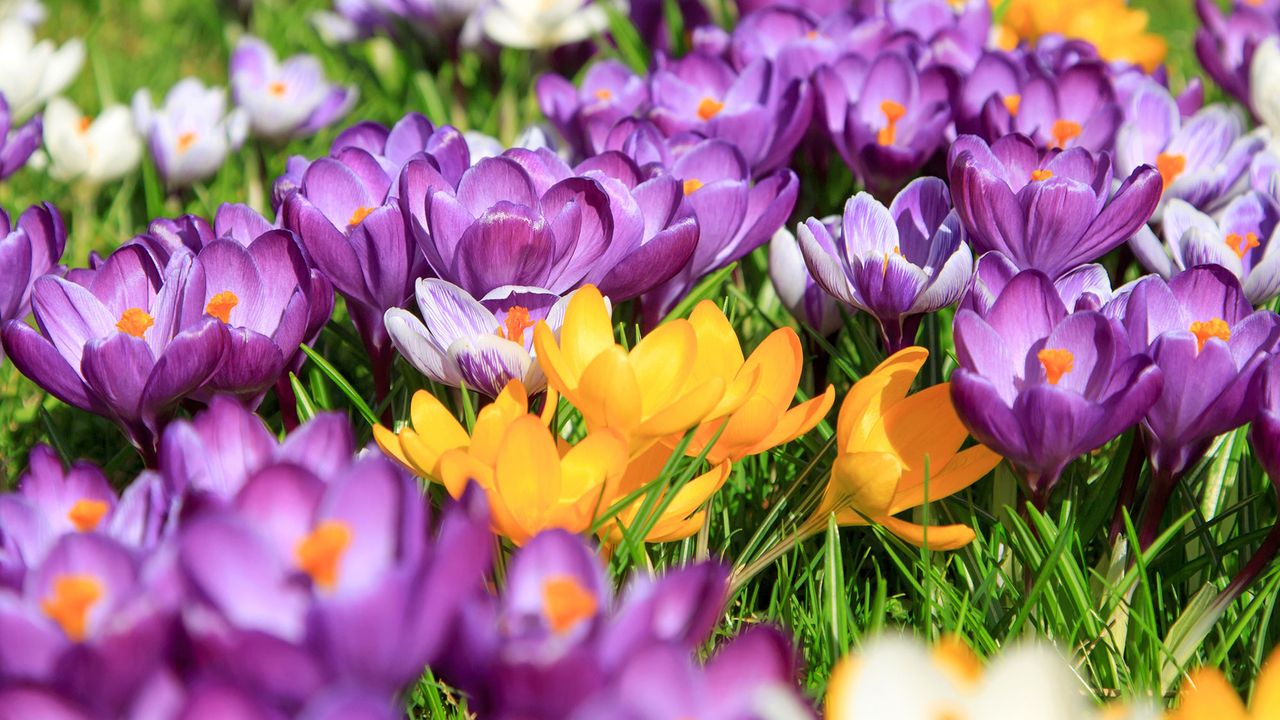Lifestyle
Discover the Best Bulbs to Plant in October for Spring Blooms

October marks an important time for gardeners looking to achieve vibrant spring blooms. This month is ideal for planting bulbs, which will ensure a flourishing garden as winter fades. Among the most cherished spring flowers are those that grow from bulbs, including crocus, snowdrop, daffodil, hyacinth, tulip, and allium. These flowers not only signal the arrival of spring but also bring much-needed color and life after the cold winter months.
The advantage of bulbs lies in their ability to store nutrients and energy within their structure. This allows them to survive harsh conditions, making them resilient in the face of winter. When temperatures rise, bulbs are prepared to emerge energetically, providing gardeners with a reliable display of blooms. Since different flower species vary in bulb size, shape, and flowering times, it is crucial to choose the right types for spring blooms.
Choosing the Right Bulbs
The earliest flowers to appear in late winter and early spring are the crocus and snowdrop. These hardy plants are often seen breaking through the snow, with crocus adding vibrant colors to the garden. Both can be planted in the fall for delightful early blooms.
As spring progresses, daffodils and hyacinths become prominent. Daffodils are recognized for their cheerful trumpet shape and bright yellow hues, with some varieties showcasing a mix of white and yellow. Hyacinths, on the other hand, feature clusters of star-shaped flowers that offer a rich fragrance and a dense splash of color.
Mid- to late-spring sees the emergence of tulips and alliums. Tulips are available in an array of colors and combinations, making them a staple in many gardens. Less widely known, alliums produce unique round clusters of tiny flowers, commonly found in shades of pink and purple, adding texture and interest to the garden.
Optimal Planting Conditions
To achieve successful blooms, timing is crucial. Bulbs require a chilling period of approximately 12-16 weeks to prepare for growth. This cold period, which simulates winter, triggers a physiological process known as vernalization. This process is essential for the bulbs to develop the ability to flower as temperatures warm in early spring.
In northern regions, October is the ideal time to plant bulbs. In contrast, southern areas can extend their planting into November, as long as the soil temperature drops below 60 degrees Fahrenheit. For those in warmer climates that may not provide sufficient cold exposure, pre-chilling bulbs in a refrigerator can be an effective solution.
When planting, select a sunny location with well-drained soil. A good practice is to incorporate compost into the soil to prevent rot. Bulbs should be buried at a depth three to four times their diameter for smaller bulbs and two to three times for larger varieties. Remember to position them with the pointed end facing upward.
Once planted, bulbs generally require minimal maintenance. Natural rainfall should suffice, but if the winter is unusually dry, some supplemental watering may be necessary. Additionally, applying a layer of mulch can help protect bulbs during colder months.
By planting bulbs in October, gardeners set the stage for a stunning display of spring flowers. With proper care, these resilient blooms can transform gardens into vibrant landscapes, offering joy and beauty after the winter months.
-

 Technology5 months ago
Technology5 months agoDiscover the Top 10 Calorie Counting Apps of 2025
-

 Health3 months ago
Health3 months agoBella Hadid Shares Health Update After Treatment for Lyme Disease
-

 Health3 months ago
Health3 months agoErin Bates Shares Recovery Update Following Sepsis Complications
-

 Technology4 months ago
Technology4 months agoDiscover How to Reverse Image Search Using ChatGPT Effortlessly
-

 Technology1 month ago
Technology1 month agoDiscover 2025’s Top GPUs for Exceptional 4K Gaming Performance
-

 Technology3 months ago
Technology3 months agoElectric Moto Influencer Surronster Arrested in Tijuana
-

 Technology5 months ago
Technology5 months agoMeta Initiates $60B AI Data Center Expansion, Starting in Ohio
-

 Technology5 months ago
Technology5 months agoRecovering a Suspended TikTok Account: A Step-by-Step Guide
-

 Health4 months ago
Health4 months agoTested: Rab Firewall Mountain Jacket Survives Harsh Conditions
-

 Lifestyle5 months ago
Lifestyle5 months agoBelton Family Reunites After Daughter Survives Hill Country Floods
-

 Health3 months ago
Health3 months agoAnalysts Project Stronger Growth for Apple’s iPhone 17 Lineup
-

 Technology4 months ago
Technology4 months agoHarmonic Launches AI Chatbot App to Transform Mathematical Reasoning









